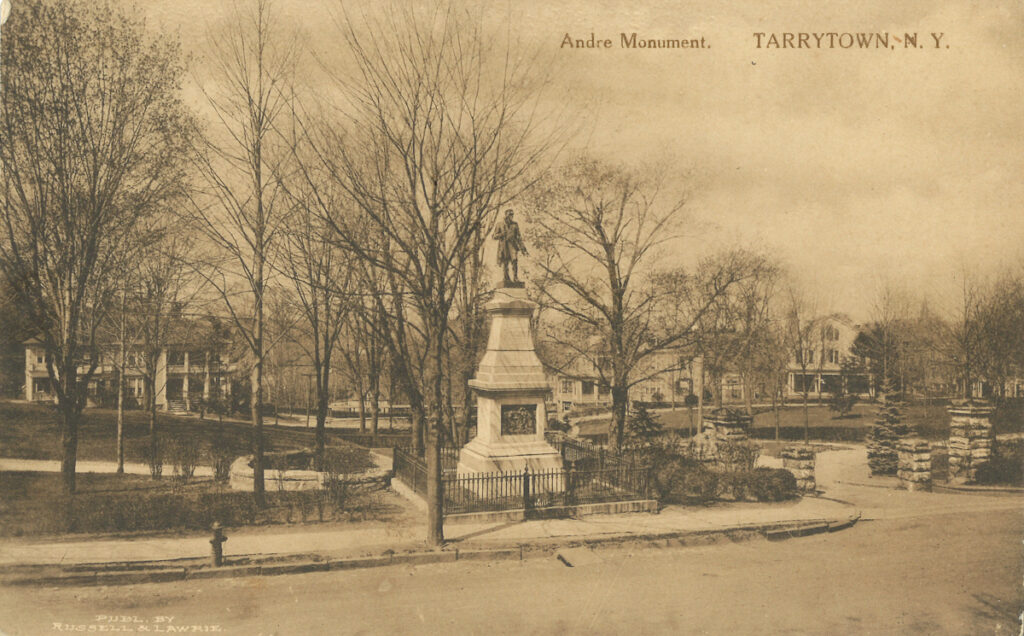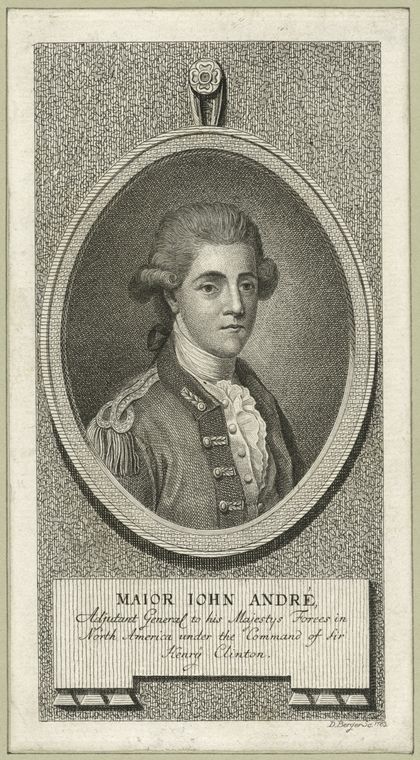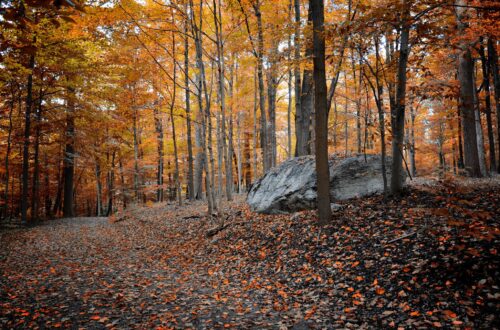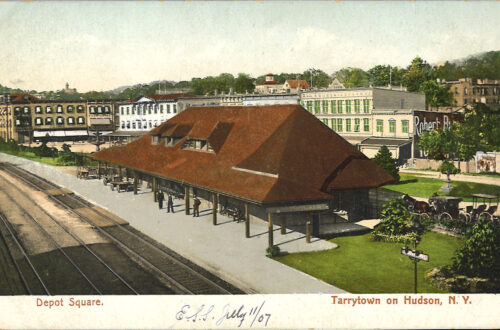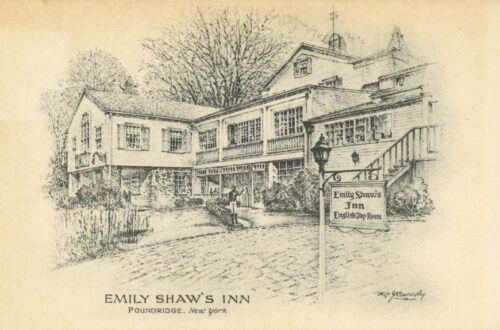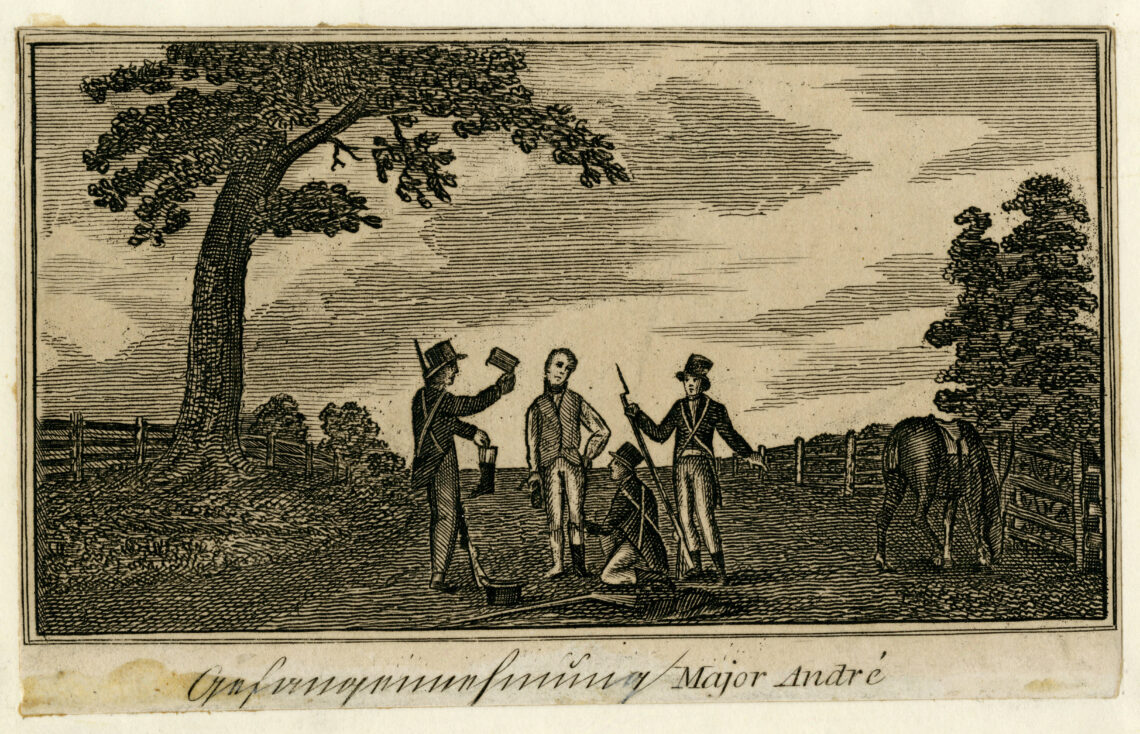
The Capture of John André
“In the centre of the road stood an enormous tulip-tree, which towered like a giant above all the other trees of the neighborhood, and formed a kind of landmark. Its limbs were gnarled and fantastic, large enough to form trunks for ordinary trees, twisting down almost to the earth, and rising again into the air. It was connected with the tragical story of the unfortunate André, who had been taken prisoner hard by; and was universally known by the name of Major André’s tree.”
–The Legend of Sleepy Hollow, by Washington Irving
Looming in the background of Washington Irving’s “The Legend of Sleepy Hollow” is the historical capture of John André, a Major in the British army. It would have been remiss of Mr. Irving to omit such a landmark event from his story, as it is such a pillar of lore in the community.
The story of André’s capture likely pervaded the time Irving spent in the region as the folk around him could recall the happening with the clarity of yesterday. It’s referenced not once, but three separate times in the legend. The spot where Major André was apprehended is also nearly the spot where poor Ichabod Crane “beheld something huge, misshapen and towering”. It is a hallowed location where two men met the makers of their fates. Since the two tales, one true and one not, are so entwined, it would be remiss of us to not recount the capture of John André here.
~
Things had not gone quite to plan. Major General John André found himself standing on the western shore of the Hudson River. He was supposed to be back on board the British sloop the Vulture, but it had been chased downriver by cannon fire from the Continentals. He was stranded.
André had completed his task in coming this far behind enemy lines. He had ironed out the details with the Continental turncoat Major General Benedict Arnold for the British Army to take control of the military base at West Point. He probably held the key to the British succeeding in winning the war, but first, he had to get through enemy territory and return to his superiors. How hard could it be?
Major General John André was British born to Huguenot parents from Switzerland and France. Like many wealthy young men at the time, he purchased a commission in the British Army. He made a name for himself amongst the British Officers during the early years of the American Revolution and was a charismatic, talented, and popular figure in the Army and colonial society. He famously planned the Mischianza for General Howe in Philadelphia in 1777 and was General Clinton’s favorite aide-de-camp.
His agreeable personality, attention to detail, and fluency in multiple languages led him to eventually become Adjutant General of the Army and head of the British Secret Service in America during the war. It was this latter appointment that allowed him to facilitate the fateful meeting with Benedict Arnold on the banks of the Hudson River on September 21st, 1780.
The plan was for André to ride back to British lines since the Vulture was unable to return. André’s successful return meant fortune and fame for Arnold, who was still trusted in the region, and Arnold procured for André the essentials needed to move through enemy territory: civilian clothing, a passport, and a fake name: John Anderson. Donning the plain clothes, André stashed Arnold’s signed plans and instructions on how to capture West Point in his boot. There was no reason to believe anything further could go wrong.
On the night of September 22nd in North Salem, NY militia men Isaac Williams, John Paulding, John Yerkes, James Romer, Isaac See, and Isaac Van Wart decided to go on an armed patrol of the area. Along their route, they picked up an additional militiaman, David Williams, and the seven men made their way south.
Four of the men stopped at Davis’ Hill (possibly Battle Hill in today’s Sleepy Hollow Cemetery), while David Williams, John Paulding, and Isaac Van Wart continued further south. They eventually settle at Clark’s Kill (the previous name to what we know today as Andre’s Brook in Patriot’s Park) near a large Tulip tree just north of Tarrytown.
The Capture of John André by Three Militia
At around 9 am, André was riding his horse towards Tarrytown. He had managed to cross the Hudson River and was calmly making his way toward British-occupied New York City. He only had 20 or so miles to go, but suddenly there were three men on the road and they had seen him.
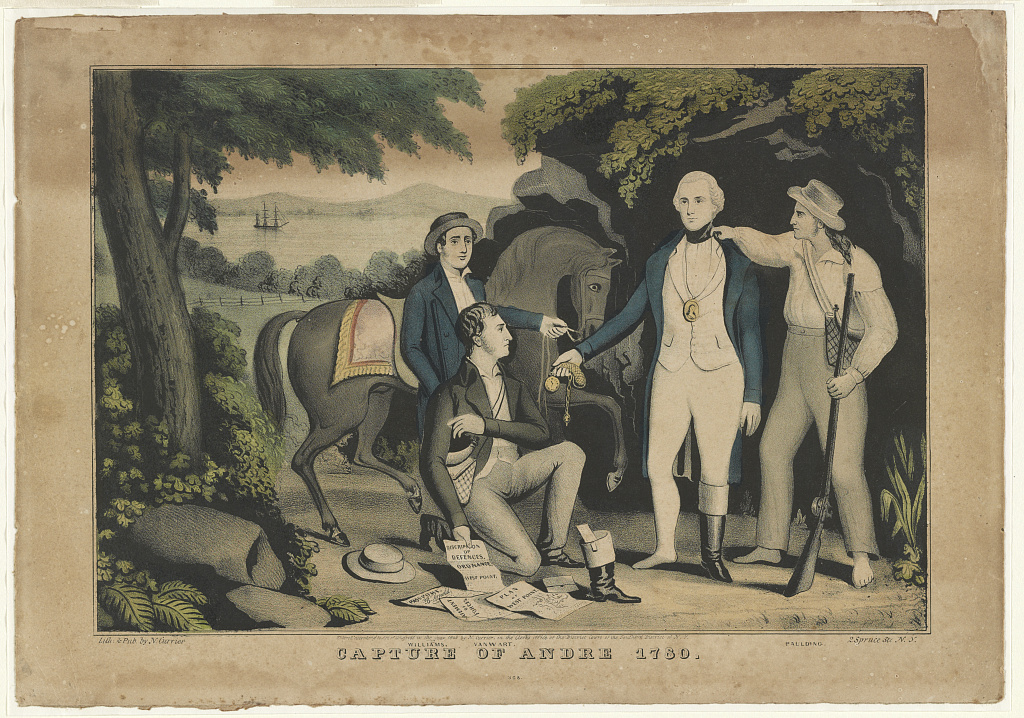
It is here, under the shade of the Tulip tree in Tarrytown that André makes his tragic mistake. Seeing that one of the men is wearing a Hessian soldier’s coat, he greets them as if they are loyal. He reveals that he is a British officer. Williams, Paulding, and Van Wart counter that they are Continentals, and when André backpedals and proffers the passport from Arnold, the men are already highly suspicious. They force André off his horse and search him. The papers are found hidden in André’s boot and Paulding, the only member of the group who can read, recognizes the importance of them.
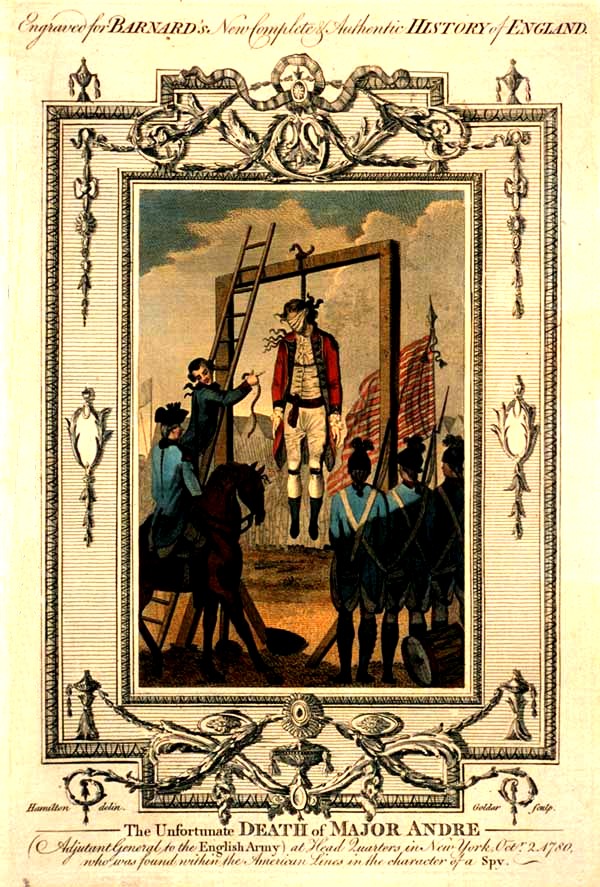
Arnold was alerted of the capture of John André, and the discovery of his treachery against his own army, and escaped. André was imprisoned at the Continental Army’s headquarters at Tappan and was found guilty of being a spy in disguise and under an assumed name. On October 2nd, 1780 he was hanged.
Many of the Continental Officers at Tappan did not want to execute the charismatic André. But, between the execution of Nathan Hale as a spy by British General Howe in 1774 and Arnold’s treason, they had no choice.
The spot of André’s capture became a landmark in the area. Appearing on maps, in literature, and even altering the geography; Clark’s Kill would be renamed Andre’s Brook. The tree eventually was felled due to lightning, but the brook remains. A village park, Patriot’s Park, recognizes the three militiamen who were in the right place at the right time.
In 1853, a monument was erected to the memory of the captors on the spot where the tree once stood and where the fated meeting took place. The inscription on the monument reads:
ON THIS SPOT
the 23rd day of September 1780 the spy
MAJOR JOHN ANDRÉ
Adjutant General of the British Army
was captured by
JOHN PAULDING, DAVID WILLIAMS
and ISAAC VAN WART,
all natives of this county.
History has told the rest.
